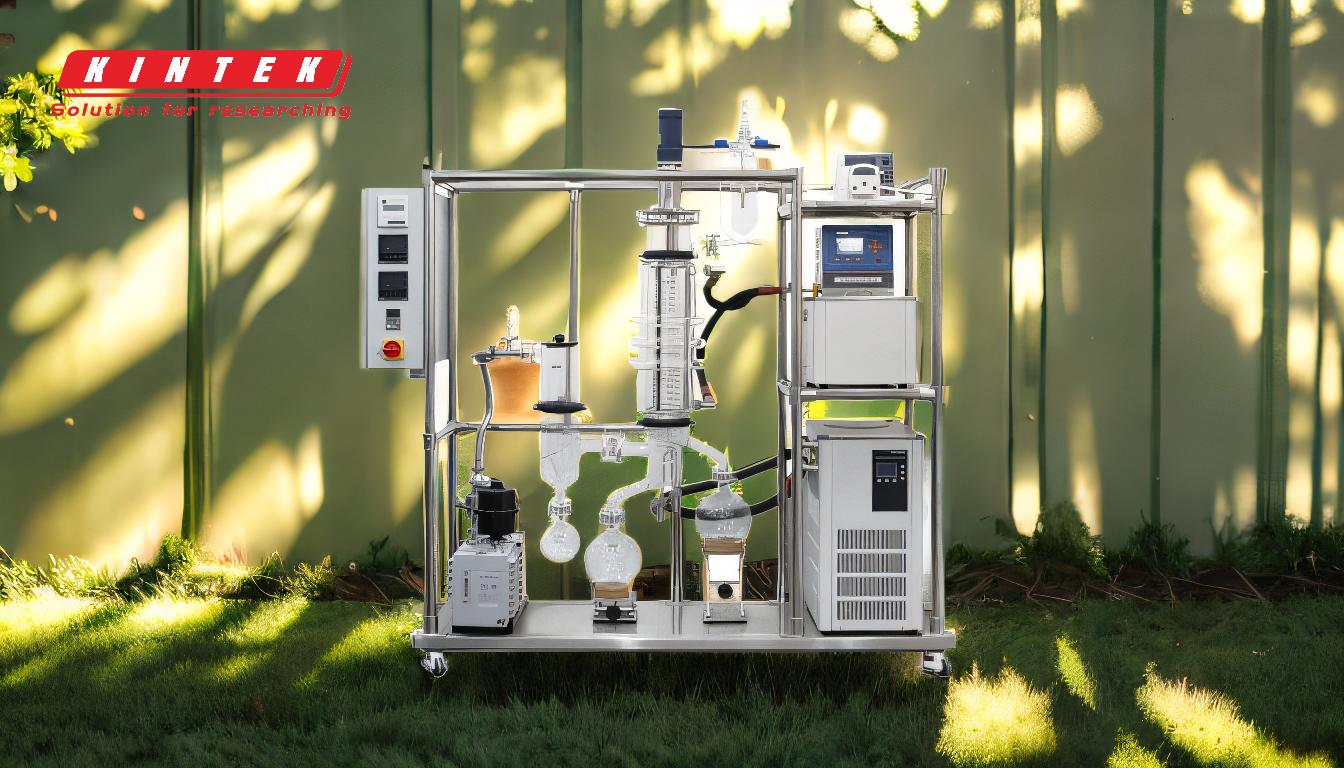Vacuum distillation is a specialized separation process that operates under reduced pressure, allowing liquids to boil at lower temperatures than they would at atmospheric pressure. This method is particularly useful for separating heat-sensitive compounds or those with high boiling points, as it minimizes thermal degradation. The process involves heating a liquid mixture in a vacuum, causing it to vaporize at a lower temperature. The vapor is then condensed and collected as a purified distillate. This technique is widely used in industries such as petrochemicals, pharmaceuticals, and food processing to achieve high-purity separations without damaging the components.
Key Points Explained:

-
Principle of Vacuum Distillation:
- Vacuum distillation relies on the principle that reducing pressure lowers the boiling point of liquids. This allows compounds to vaporize at temperatures much lower than their normal boiling points, making it ideal for separating heat-sensitive materials.
- For example, water boils at 100°C at sea-level atmospheric pressure (1000 mbar), but under a vacuum of 45 mbar, it can boil at significantly lower temperatures, preserving the integrity of delicate compounds.
-
Process Steps:
- Setup: A vacuum distillation apparatus includes a flask for the liquid mixture, a condenser to cool the vapor, and a receiver to collect the distillate. A vacuum pump is connected to the system to create the necessary low-pressure environment.
- Application of Vacuum: The vacuum pump is turned on to reduce the pressure within the system, ensuring the liquid mixture can boil at lower temperatures.
- Heating and Vaporization: The mixture is gently heated, causing it to vaporize at the reduced boiling point.
- Condensation and Collection: The vapor is condensed back into liquid form and collected in the receiver as the purified distillate.
-
Advantages of Vacuum Distillation:
- Lower Operating Temperatures: By reducing pressure, vacuum distillation allows for separation at lower temperatures, which is critical for heat-sensitive or thermally unstable compounds.
- Preservation of Quality: The gentle process helps retain the quality, taste, and chemical integrity of the materials being distilled.
- Energy Efficiency: Lower temperatures can result in reduced energy consumption compared to atmospheric distillation.
-
Applications:
- Petrochemical Industry: Used to separate crude oil into various fractions, such as lubricating oils and waxes, without thermal cracking.
- Pharmaceuticals: Ideal for purifying heat-sensitive active pharmaceutical ingredients (APIs) and intermediates.
- Food and Beverage: Employed to extract essential oils, flavors, and fragrances without compromising their sensory properties.
-
Comparison with Simple Distillation:
- Simple distillation is effective for separating liquids with significantly different boiling points, such as water and salt. However, it provides only moderate purity improvements.
- Vacuum distillation, on the other hand, is more versatile and suitable for complex mixtures or materials that degrade at high temperatures.
-
Key Considerations for Equipment and Consumables:
- Vacuum Pump: A high-quality vacuum pump is essential to maintain consistent low pressure throughout the process.
- Condenser: Efficient condensation is critical to ensure maximum recovery of the distillate.
- Sealing: Proper sealing of the apparatus is necessary to prevent leaks and maintain the vacuum.
- Heating Source: A controlled heating source is required to gently heat the mixture without causing localized overheating.
By understanding the principles, steps, and advantages of vacuum distillation, purchasers can make informed decisions about the equipment and consumables needed to implement this process effectively in their operations.
Summary Table:
| Aspect | Details |
|---|---|
| Principle | Reduces pressure to lower boiling points, ideal for heat-sensitive compounds. |
| Process Steps | Setup, application of vacuum, heating/vaporization, condensation/collection. |
| Advantages | Lower temperatures, preserves quality, energy-efficient. |
| Applications | Petrochemicals, pharmaceuticals, food & beverage. |
| Equipment Needed | Vacuum pump, condenser, proper sealing, controlled heating source. |
Ready to implement vacuum distillation in your operations? Contact our experts today for tailored solutions!











